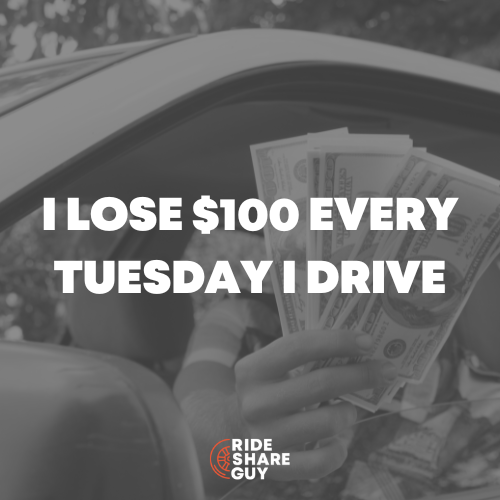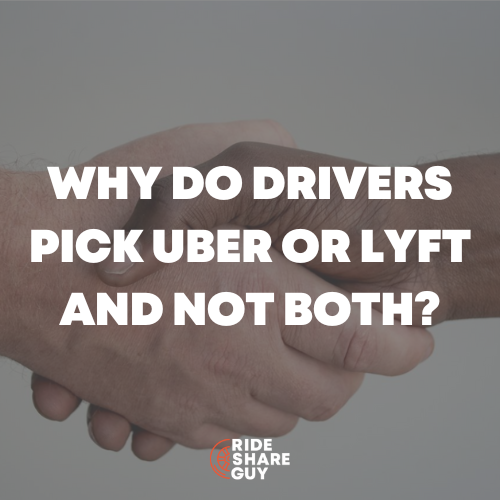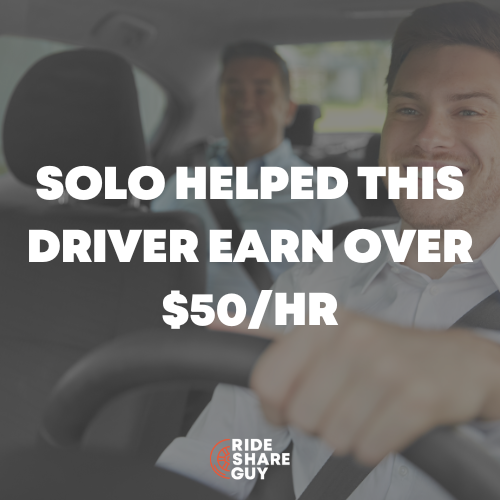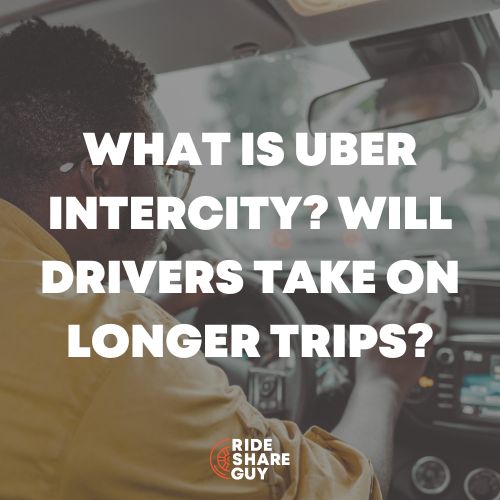The second installment of Jay drives a taxi instead of rideshare brings a summary to Jay’s entire taxi experience. How much did he make? What was the overall experience like? Senior RSG contributor Jay Cradeur answers those questions and provides his 5 takeaways to anyone interested in ditching rideshare for taxi driving.
You can read Jay’s first article on getting started as a taxi driver here.
When Harry, aka “The Rideshare Guy,” first asked me to become a taxi driver so I could share about the experience [link to taxi article, not yet published], I had no idea what I was in for. Having less of a fear of the unknown than most, I rather blindly said, “Yes!” and undertook to secure my “A” Card and establish a relationship with Flywheel Taxi. Then last week, I drove for five days in Flywheel Taxi #592.

In this article, I will share with you what were the five biggest takeaways from the week. I was surprised by how much I enjoyed driving a taxi. There were many positive aspects to the experience and just a few negative. Overall, as you will read, my time driving a hack was wonderful, educational and impactful. Let’s get into it.
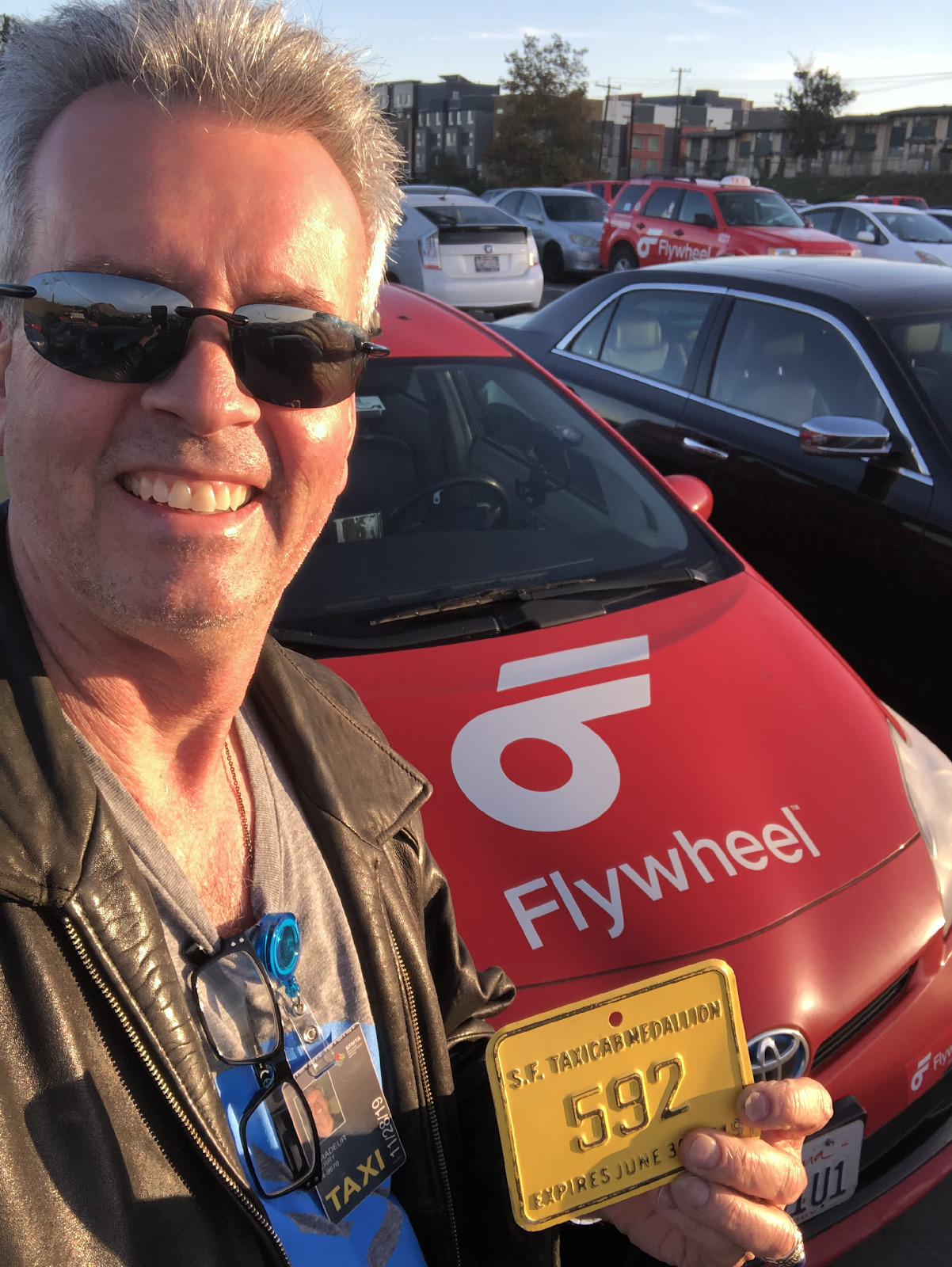
1. The Taxi Has More Moving Parts
I originally picked Flywheel Taxi because I had seen a Prius on the streets of San Francisco with information about the Flywheel app. When I scheduled my first day of driving, I asked if I could have a Prius for the week. I know the Prius intimately so it would be one less thing I would have to think about.
Managing a taxi is more complicated than managing a car driving for Uber and Lyft. The taxi is equipped with three extra pieces of equipment. The first is the meter as you can see in this picture.
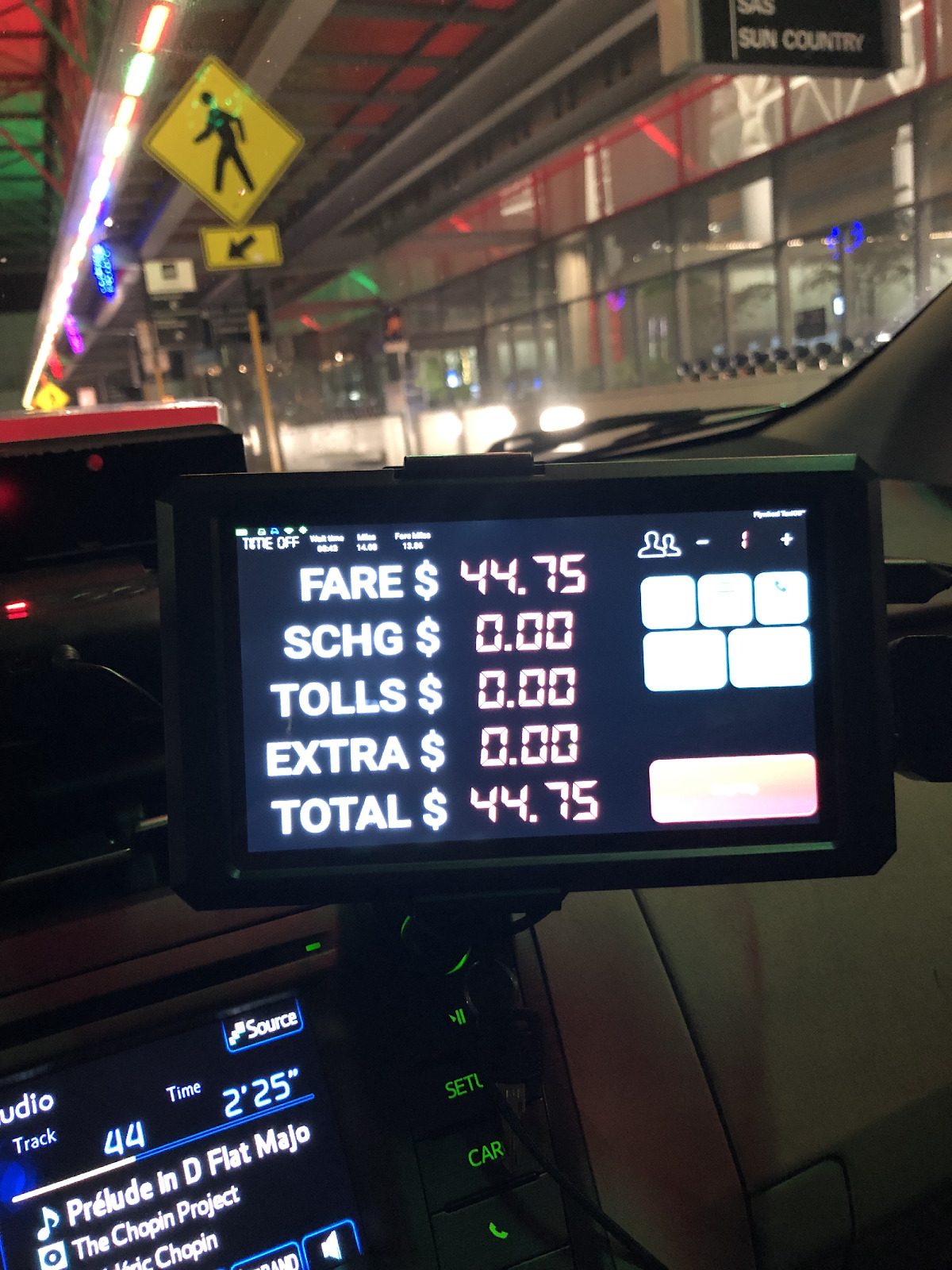
Once a passenger gets into your car, you need to start the meter. On two rides on my first day, I forgot to start the meter until about halfway into the trip. It did not take too many of those lost revenue experiences to teach me to always start the ride once the passenger’s hand touches the door to enter.
The meter also served to ping me when there is a pickup, just like with Uber and Lyft. The meter is also how I process credit cards and Paratransit cards (a program for senior and disabled citizens to travel around San Francisco via taxi). During my week, the Paratransit card reader was not working so I needed to fill out the Paratransit forms by hand for each passenger as you can see in the picture below.
The other pieces of equipment are a printer for receipts and a video camera installed for insurance purposes.
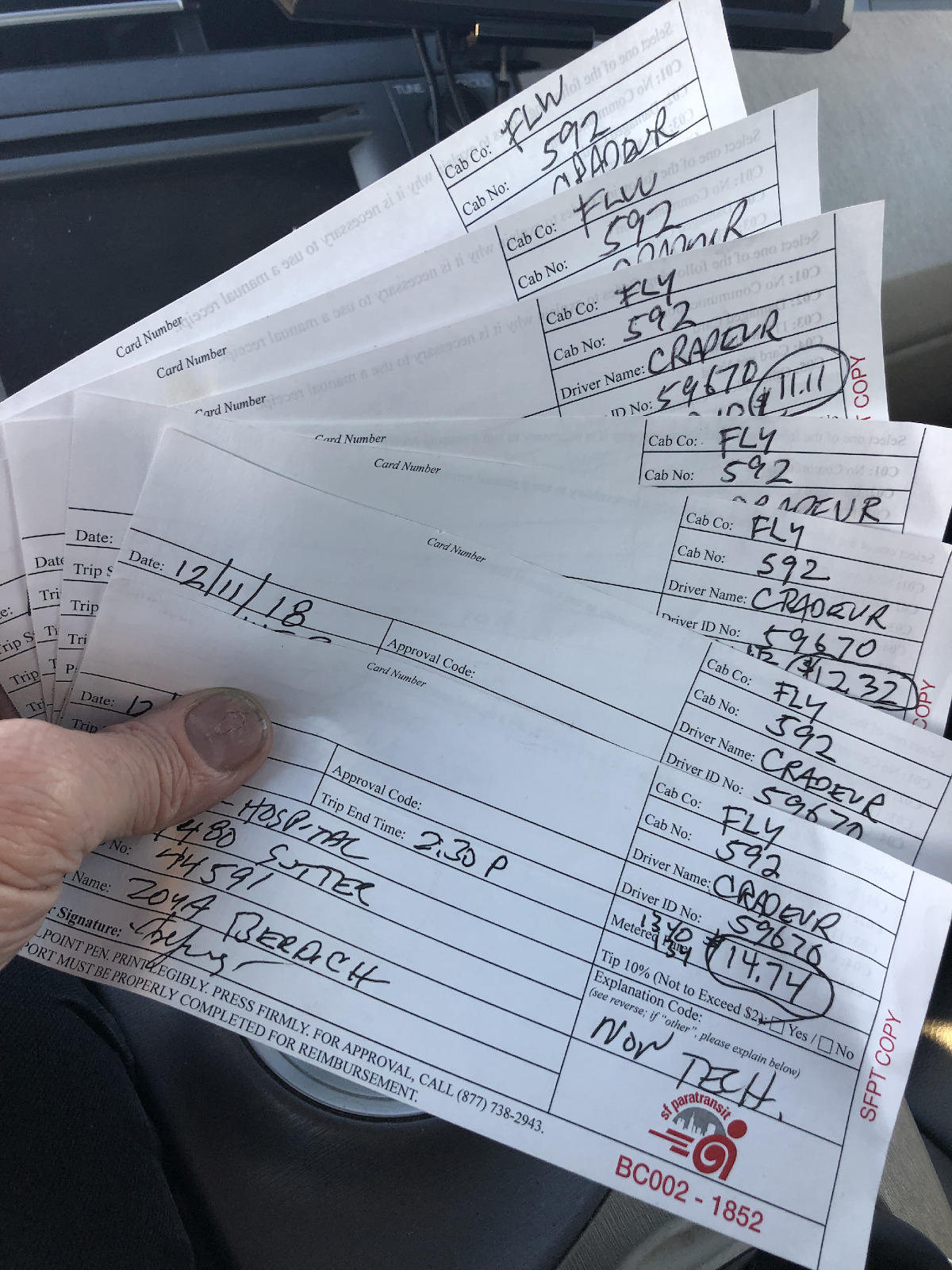
2. More Skill And Finesse Is Required Of A Taxi Driver
It is much more difficult to be a taxi driver than a Lyft or Uber driver. Not only do taxi drivers often have to collect the fare (via cash, credit card, Paratransit card or voucher), but they are also expected to know the city with all its neighborhoods, landmarks, streets, and alleys.
Taxi passengers want to know that you know how to get from point A to point B without a GPS program such as Waze or Google Maps. Taxi passengers like to give you cross streets, like “take me to 45th and Noriega” or “take me to Geary and Arguello.” Taxi passengers don’t suffer fools gladly. A couple of passengers did not approve of my route and they let me know.
Overall, I was grateful for my three years and 22,000 rides and the local city knowledge I had accrued. It served me well.
Taxi drivers also have to be a bit more creative in how one gets rides. Some rides will come through the app. Some rides will come from folks waving their arm at you, also known as “hailing a cab.” As I drove around San Francisco, I noticed many of my passengers were coming from the hospital, so I created a big loop that ran me past several hospitals. This seemed to work well. I also drove on the busiest streets with pedestrians so I could secure the occasional hail.
I must also mention that I felt an unmistakable sense of pride while I worked as a taxi driver. It was empowering to use more of my skill set to earn revenue and manage my passengers. The taxi passengers expect more of their drivers, and it felt good to be able to deliver, in most cases.
3. I Loved My Taxi Passengers
Hands down, taxi passengers are the best. If Uber and Lyft passengers tend to be 30 years of age or less, taxi passengers are 30 and older. During one two-hour span, I had a 100-year-old woman (named Pearl) and two others at the tender age of 91. These people were interesting. They liked to talk. None of them stared at their phone during the ride.
They also tip very well. The Flywheel app allows passengers to set a default tip amount, similar to what Lyft will soon be introducing. Sometimes I was notified about an automatic tip before even arriving at the passenger’s pick up.

The other important point about taxi passengers is most of them have a strong and well thought out opinion about Uber and Lyft and the rideshare driving industry. In short, they don’t like it. They don’t like it at all.
They don’t like how Uber and Lyft treat their drivers. They don’t like how Uber and Lyft have increased traffic congestion in most major cities. And they don’t like how Uber and Lyft have decimated the livelihood of so many taxi drivers.
When I told passengers I was going to write this article, they felt comfortable to share their true feelings. Taxi passengers have a strong sense of responsibility for their fellow man and the environment. They don’t mind paying a few extra dollars to maintain a clean conscience. I learned from my taxi passengers. I will miss them.
4. The Taxi Money Is Not Bad But Not As Good As Rideshare In San Francisco
The photo of the taxi meter above shows you my first completed ride. It was an airport run from the center of San Francisco to SFO. Instead of making $20 to $25 from Uber or Lyft on an airport run, I could earn $45 to $50 in my taxi. In general, a taxi in San Francisco will run about double that of Uber or Lyft. There are two factors, however, that severely hamper a taxi driver’s ability to earn revenue in San Francisco: the gate and the demand.
The gate is the amount of money a driver must pay each day for the use of the taxi. At Flywheel in San Francisco, the gate for a 12-hour shift is $95. That covers everything except gas. The driver needs to fill the car up with gas before returning it to the lot for the next driver.
At first, I thought $95 was a very high figure. In the morning while I was driving, I was very aware that my first $95 in earnings was not mine. It would all go to the gate, and then everything I earned after would go to me. By comparison, if you add up all your automobile expenses for the month (including repairs) and divide by 20 (5 days per week), you can calculate your own gate.
In my case, I spend $660 for the car (through Uber’s leasing program) and another $100 for insurance. I estimate I spend another $150 per month for tires and brakes. If we take the total of $990 and divide by 20 days, my rideshare car has an approximate gate of $50. The taxi is definitely more expensive.
The second factor is demand. Uber and Lyft have strong demand here in San Francisco. Just last Saturday, I drove for 9 hours and racked up 40 rides and $325 in revenue. With the taxi driving, the demand is roughly about half. I spent a great deal of time cruising, waiting for pings and looking for hails.
I wish this was not the situation. I enjoyed the taxi driving. However, I could not make the same kind of money. At the end of a full week, my earnings were about 65% of what I regularly make with Lyft.
Unfortunately, the taxi industry is playing against a fixed deck. Neither Uber nor Lyft is profitable. Unlike the taxi companies, Uber and Lyft don’t need to be profitable. They can offer passengers artificially lowered fares, subsidized by venture capital funding and soon by stockholder funds. They also can offer high sign on and driver incentive bonuses.
Of course, demand for Uber and Lyft are higher because their rides are cheaper. It will be interesting to see what happens when Uber and Lyft raise their rates in order to turn a profit. At least then the fight between rideshare companies and taxis will be more equitable.
5. The Camaraderie Is Stimulating
When I was driving the taxi, I felt like the company, Flywheel Taxi, had my back. When I was in the office, I could see other drivers felt the same way. Even though taxi driving is not generating the same kind of money as it once was, the drivers feel a sense of honor and duty, which is not something I experience with Uber or Lyft.
How could we? Uber and Lyft both just changed the pay structure so that long rides pay significantly less. Lyft keeps jerking me around with their bonus so that I never know from week to week what I will be offered. How could anyone in their right mind feel like Uber or Lyft have our backs? I did not feel like a pawn while driving my taxi. I felt wanted, needed and appreciated and that felt good.
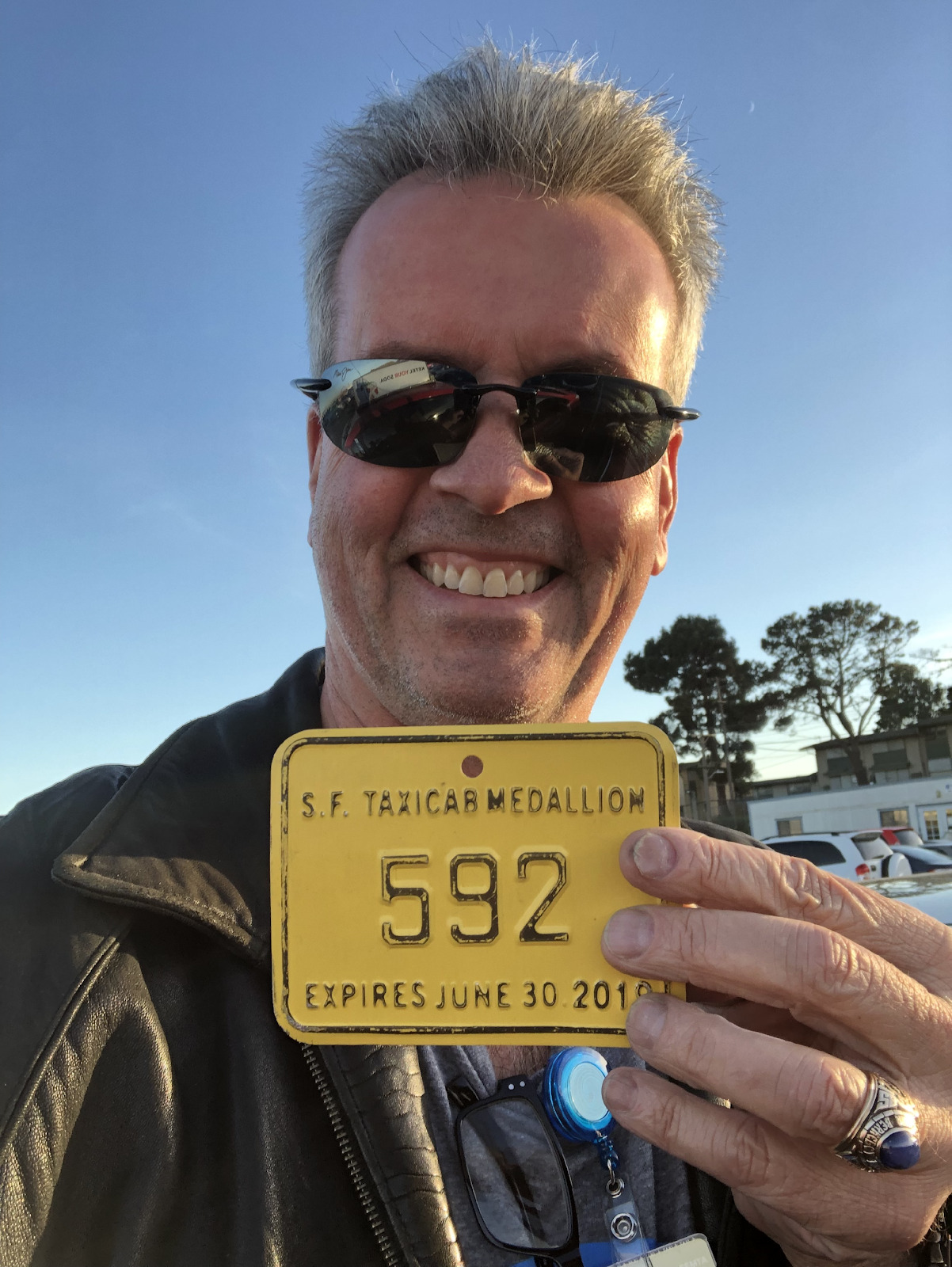
The other thing that is cool about the taxi experience is the banter that comes over the speaker from Dispatch. Dispatch is like the mother or father of the drivers who let you know when a ride is canceled, or made available. I was told where accidents had occurred, and when the cruise ship was off boarding and taxis were needed. It reminded me of the old TV show Taxi with Danny DeVito. I liked it. Instead of being an island amongst myself driving for Uber or Lyft, I was part of a team all working to provide a good service for our loyal passengers.
Is Taxi Driving for Me?
I enjoyed driving a taxi. There is a long tradition of taxi driving and it felt good to be a part of it. I enjoyed the guys at Flywheel and all their support and insights. While taxis have hit a very disruptive speed bump, I do believe in time Uber and Lyft will have to deal with the reality of turning a profit, and that is when taxis will again have an opportunity to shine.
However, as of today, I am also a realist. Driving for Lyft and Uber pays my bills and affords me the opportunity to support my family and travel extensively. I won’t bite the hand that feeds me. Thank you to everyone at Flywheel for a wonderful week. You guys were awesome to work with!
Drivers, does this article change your mind about taxi driving? Would you appreciate the support and camaraderie of taxi driving – enough to leave rideshare driving?
-Jay @ RSG
